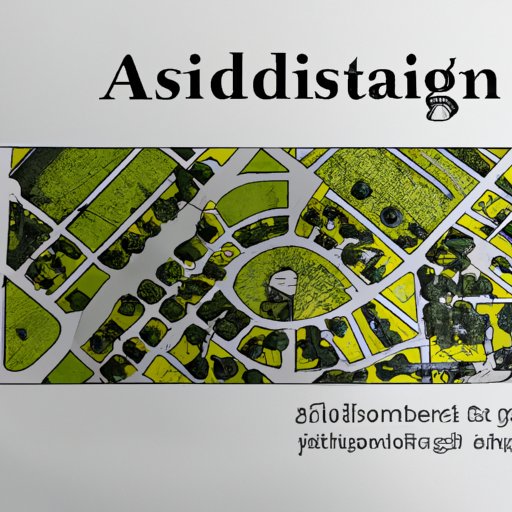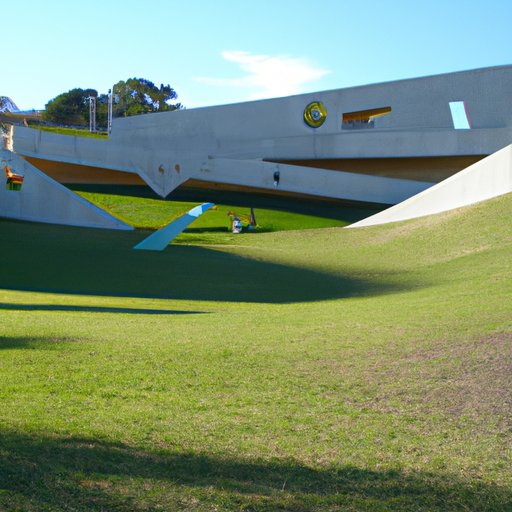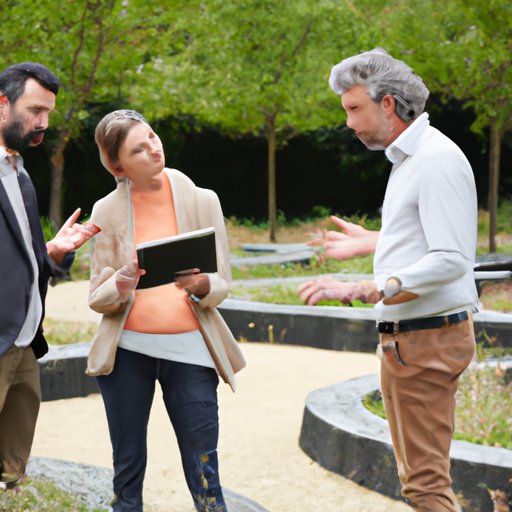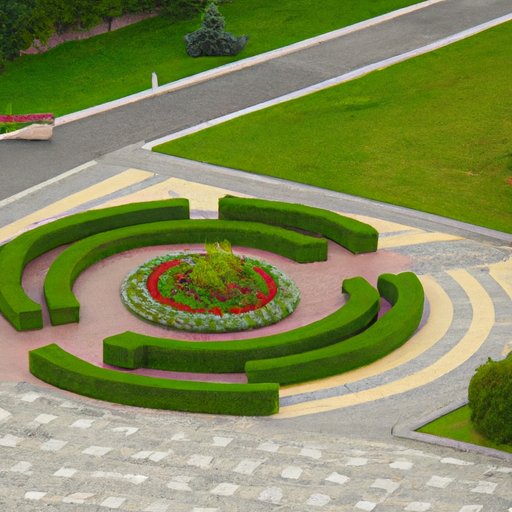Introduction
Landscape architecture is a growing profession that combines art, science, and technology to create aesthetically pleasing outdoor spaces. It involves the planning, design, management, and conservation of land and water resources for public and private use. Through the thoughtful integration of natural and man-made elements, landscape architects strive to create attractive, functional, and sustainable outdoor environments.
Definition of Landscape Architecture
The American Society of Landscape Architects defines landscape architecture as “the analysis, planning, design, management, preservation, and rehabilitation of the land.” It is a discipline that involves the careful consideration of both existing and potential uses of land, and the creation of plans to maximize these uses while preserving the environment. Landscape architects are responsible for designing and creating public parks, urban design projects, residential landscaping, and environmental restoration projects.
Overview of the History and Principles of Landscape Architecture
The practice of landscape architecture has deep roots, with some of the earliest recorded examples dating back to ancient Egypt and Mesopotamia. Over the centuries, it has evolved from purely aesthetic endeavors to a more holistic approach that takes into account the needs of the environment and the people who inhabit it. Today, landscape architects use a combination of artistic creativity, scientific knowledge, and technical expertise to create beautiful and sustainable outdoor spaces.
At its core, landscape architecture is based on three main principles: sustainability, functionality, and aesthetics. Sustainability focuses on creating designs that are environmentally friendly and self-sustaining. Functionality refers to the practical use of space, such as providing recreational opportunities or protecting natural resources. Aesthetics refers to the visual appeal of the design, such as the use of color, texture, and other elements to create an inviting atmosphere.
Exploring Different Types of Landscape Architecture Projects
Landscape architects can work on a wide variety of projects, ranging from small residential designs to large-scale public parks. Some of the most common types of landscape architecture projects include:
Public Parks and Open Spaces
Public parks and open spaces are a cornerstone of landscape architecture. These projects often involve the creation of recreational areas, such as playgrounds, sports fields, and walking trails. Landscape architects must consider the needs of the community when designing these spaces, as well as their impact on the environment.
Urban Design
Urban design projects involve the design and development of cities and towns. These projects often focus on creating vibrant streetscapes, pedestrian-friendly pathways, and green spaces. The goal of urban design is to create a livable and sustainable environment for residents and visitors alike.
Residential Design
Residential design projects involve the creation of outdoor spaces for individual homes or multi-family dwellings. These projects typically focus on creating inviting outdoor living spaces, such as decks, patios, and gardens. Landscape architects must consider the needs of the homeowner and the surrounding environment when designing these spaces.
Environmental Restoration
Environmental restoration projects involve the rehabilitation of degraded ecosystems. These projects often involve the reintroduction of native plants and animals, the removal of invasive species, and the restoration of habitats. Landscape architects must consider the needs of the environment when designing these projects.
Examining the Benefits of Landscape Architecture
Landscape architecture offers numerous benefits to both individuals and society as a whole. Here are some of the most notable advantages of this profession:
Improving Quality of Life
Studies have shown that exposure to nature can improve mental health and reduce stress levels. Well-designed outdoor spaces also provide recreational opportunities and encourage physical activity, which can help improve overall health and wellness. According to a study by the Centers for Disease Control and Prevention, “access to quality parks and recreation facilities is associated with improved mental health, increased physical activity, and greater social connectedness.”
Enhancing Aesthetics
Landscape architecture can also be used to enhance the aesthetics of a space. By carefully selecting plants, trees, and other elements, landscape architects can create visually appealing outdoor spaces that can be enjoyed by all.
Protecting Natural Resources
In addition to enhancing the beauty of a space, landscape architecture can also be used to protect natural resources. By using sustainable design principles, landscape architects can create designs that minimize the impact on the environment and preserve valuable resources.

Investigating the Role of Landscape Architects in Society
Landscape architects play an important role in society. In addition to designing aesthetically pleasing outdoor spaces, they must also adhere to professional standards and practices. Here are some of the ways landscape architects contribute to society:
Professional Standards and Practices
Landscape architects must adhere to professional standards and practices in order to ensure the safety and quality of their work. This includes following local, state, and federal regulations, as well as adhering to ethical guidelines and best practices. Landscape architects must also stay up-to-date on the latest industry trends and technologies.
Collaborative Work with Other Professionals
Landscape architects often collaborate with other professionals, such as architects, engineers, and urban planners. By working together, they can create comprehensive designs that address the needs of the environment, the community, and the client. This collaborative approach helps ensure that projects are completed efficiently and effectively.
Regulatory and Political Influence
Landscape architects also have the opportunity to influence policy and regulation through their work. By advocating for sustainable design practices and protecting natural resources, they can help shape the future of the profession and the environment.

Highlighting Notable Landscape Architectural Projects Around the World
Landscape architects have been involved in some of the world’s most iconic projects. Here are some notable examples from around the world:
Examples from Europe
In Europe, landscape architects have been involved in some of the continent’s most famous projects. For example, the Palace of Versailles was designed by Andre Le Notre, one of the most influential landscape architects of all time. Other notable European projects include the Jardin des Tuileries in Paris, designed by Jean-Claude Nicolas Forestier, and the Gardens of the Alhambra in Granada, Spain, designed by Ricardo Camacho.
Examples from Asia
In Asia, there are several notable landscape architectural projects. The Imperial Palace in Beijing, China was designed by Giuseppe Castiglioni. In Japan, the Katsura Imperial Villa was designed by Kobori Enshu, and the Adachi Museum of Art was designed by Mirei Shigemori.
Examples from North America
In North America, there are several iconic projects designed by landscape architects. The Central Park in New York City was designed by Frederick Law Olmsted and Calvert Vaux. The Biltmore Estate in Asheville, North Carolina was designed by Richard Morris Hunt. And the Grand Teton National Park in Wyoming was designed by Thomas Moran.

Discussing the Impacts of Technology on Landscape Architecture
Technology is playing an increasingly important role in landscape architecture. Here are some of the ways technology is impacting the profession:
Automation in Design and Construction
Technology has made it easier for landscape architects to design and construct complex projects. Software tools allow them to quickly create detailed models and simulations, which can be used to visualize the project before construction begins. Additionally, automated construction methods can make it easier to build large-scale projects.
Use of Sensors and Data Collection
Sensors and data collection tools are becoming increasingly important in landscape architecture. These tools allow landscape architects to monitor environmental conditions, such as air quality and soil moisture, in real-time. This data can then be used to create more efficient and sustainable designs.
Advances in Maintenance and Management
Technology has also made it easier to maintain and manage landscapes. Automated irrigation systems, for example, can help conserve water and reduce labor costs. Additionally, sensors and monitoring systems can be used to detect problems before they become serious.
Conclusion
Landscape architecture is a dynamic and evolving profession that combines art, science, and technology to create aesthetically pleasing outdoor spaces. From public parks to urban design projects, landscape architects play an important role in society by improving quality of life, enhancing aesthetics, and protecting natural resources. With the help of technology, landscape architects can create more efficient and sustainable designs that will benefit future generations.
(Note: Is this article not meeting your expectations? Do you have knowledge or insights to share? Unlock new opportunities and expand your reach by joining our authors team. Click Registration to join us and share your expertise with our readers.)
